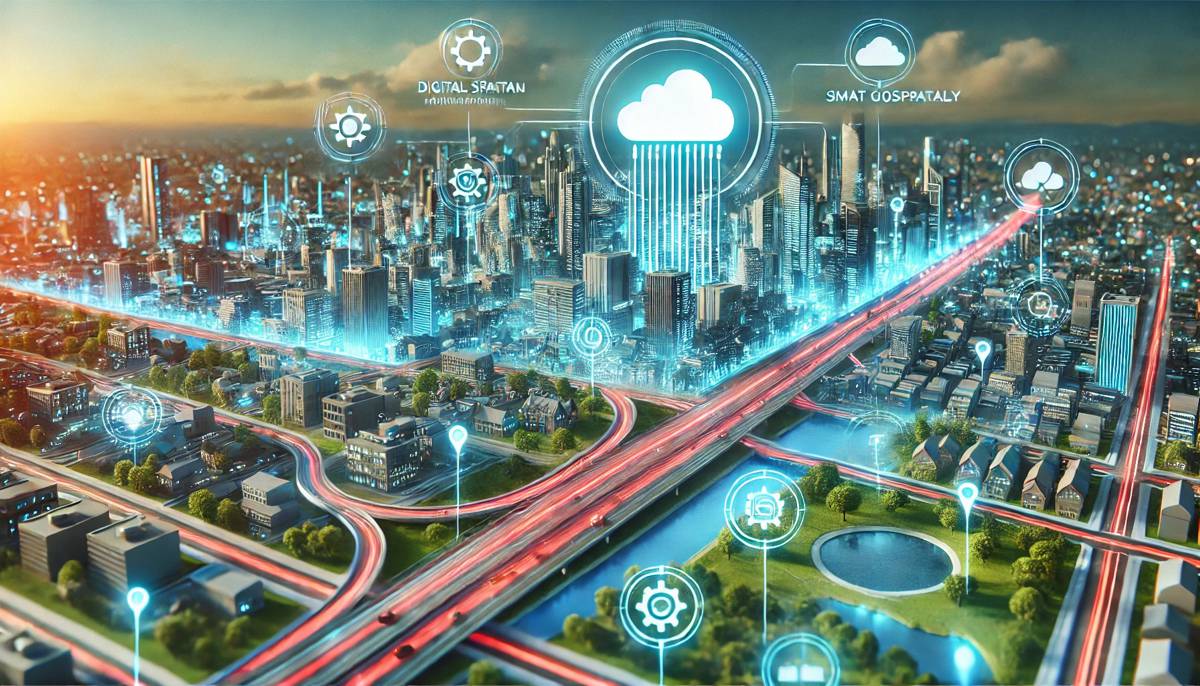Bentley Systems teams up with Google to Transform Infrastructure with Geospatial Technology
The world of infrastructure just got a whole lot more exciting, and it’s all thanks to an intriguing partnership between two industry giants: Bentley Systems and Google.
For those in construction, urban planning, or engineering, this collaboration is nothing short of ground-breaking. Bringing together Bentley’s expertise in infrastructure software and Google’s remarkable geospatial content is set to revolutionise how infrastructure is designed, built, and managed.
Let’s break down what this really means for the industry, and how it might just shape the future of infrastructure.
Bentley Systems Teams Up with Google
Bentley Systems, known for its robust infrastructure engineering software, has teamed up with Google to integrate Google’s high-quality 2D and 3D geospatial data with Bentley’s powerful platforms. This integration will give infrastructure professionals direct access to Google Maps Platform’s Photorealistic 3D Tiles, setting a new standard in geospatial context and immersive visualisation.
But it’s not just about creating pretty 3D models; it’s about bringing deep geospatial context into every stage of a project—from the initial planning and design phases through construction and, eventually, operation and maintenance. By merging these capabilities, engineers and architects are equipped with enhanced digital twins—an impressive blend of real-time data, immersive visuals, and predictive analytics.
And who doesn’t like the idea of having detailed, real-world context at their fingertips while planning infrastructure? Bentley Systems CEO Nicholas Cumins certainly seems to think so. He explained that combining Google’s extensive geospatial content with Bentley’s engineering software creates an environment where projects are designed and maintained with greater resilience and sustainability.
“By combining Google’s extensive geospatial content and cloud capabilities with Bentley’s infrastructure engineering software and digital twin platform, infrastructure professionals can improve their work and ensure projects and assets are created and operated with greater resilience and sustainability,” Cumins said.
Digital Twins
Now, let’s talk digital twins—a concept that’s been making waves across the engineering and infrastructure sectors lately. Essentially, digital twins are real-time digital replicas of physical assets, giving engineers and operators real-time visibility of their infrastructure. Imagine being able to predict when a bridge needs maintenance or modelling how a road might hold up under varying weather conditions—that’s the power of digital twins.
By integrating Google’s geospatial data, Bentley’s digital twin platform takes things to a new level. Engineers can now view incredibly accurate depictions of the environment surrounding their projects—whether that’s a crowded urban landscape or a rugged rural setting. By visualising infrastructure in its real-world geospatial context, decision-makers can make better-informed calls that not only improve efficiency but also drive resilience in the face of challenges like climate change.
The benefits extend far beyond just the planning and design phases; they include monitoring aging infrastructure, improving asset management, and optimising resource allocation. In today’s climate of tightening budgets and increasing regulatory pressures, these capabilities could prove invaluable for municipalities, developers, and contractors alike.
Google 3D Tiles
For those unfamiliar, Google’s Photorealistic 3D Tiles represent an exciting leap forward in mapping technology. This feature, part of the Google Maps Platform, offers real-world geospatial context with a jaw-dropping level of detail. It’s not just about providing a flat map; it’s about delivering the kind of immersion that helps engineers understand the environment they’re working with—from ground-level streetscapes to towering skyscrapers.
Chris Phillips, Vice President and General Manager of Geo at Google, weighed in on the collaboration: “Photorealistic 3D Tiles in Google Maps Platform power breathtaking immersive experiences and can transform workflows for architects, engineers, and urban planners. We’re excited to partner with Bentley to bring powerful geospatial context and capabilities that can dramatically improve how infrastructure is designed, built, and operated with data.”
These immersive capabilities help bridge the gap between conceptual plans and the reality of construction, offering an almost hands-on understanding of a site before the first shovel hits the ground.
The Role of AI and Cloud Technology in Infrastructure
Bentley’s partnership with Google isn’t limited to visualisation. Together, they are exploring how cloud computing and AI can take infrastructure management to the next level. Google Cloud provides a highly scalable environment that hosts Bentley’s digital twins, allowing asset managers to gather real-time data on infrastructure assets—be it a highway, water utility, or urban building.
Using AI-driven analytics, operators can understand patterns and predict issues long before they become real problems. Imagine a water treatment facility that can predict a component failure and schedule maintenance before a breakdown—these kinds of insights are the direct result of integrating AI and cloud technologies into asset management.
But it doesn’t stop there. The AI capabilities that Google brings to the table offer predictive analytics that empower proactive decision-making—resulting in improved efficiency, reduced costs, and, let’s face it, fewer headaches for those involved in managing these massive infrastructure projects.
What This Means for the Industry
So, why does this partnership matter? It’s all about making infrastructure smarter, more connected, and ultimately more sustainable. From transportation networks to water utilities, infrastructure is something society relies on daily. Yet much of it is aging and not fit for the future challenges we face, like climate adaptation and urban growth.
By combining Bentley’s modelling software with Google’s geospatial capabilities, infrastructure projects become not only more efficient but also resilient. Design decisions can now be based on accurate, real-world data, making them robust against risks like natural disasters, extreme weather, or simply the test of time.
For the investors and stakeholders funding these projects, the ROI becomes clearer, thanks to improved planning accuracy and streamlined asset management processes.
Bentley Systems and Google
Both Bentley Systems and Google have made significant strides on their own in the past, but together, their offerings are poised to shift the paradigm in the infrastructure sector. The integration of these technologies promises to not only boost efficiency and sustainability but also spark new opportunities for the digital transformation of the construction industry.
Digital twin technology, combined with real-world geospatial context, is driving us towards smarter cities, more efficient infrastructure, and proactive management practices that can anticipate and solve issues before they arise. As both companies continue to push the boundaries of what’s possible in digital infrastructure, the industry’s future looks decidedly more resilient and, dare we say, sustainable.
Infrastructure professionals, from developers to government bodies, are encouraged to tap into these advances. With more immersive tools at their disposal, the planning and execution of complex projects become more transparent and less error-prone—ultimately leading to more resilient assets that serve communities better for years to come.
A Positive Outlook for Infrastructure Innovation
In an industry often marked by slow-moving processes and entrenched ways of doing things, this collaboration stands out as a beacon of hope. The partnership between Bentley Systems and Google isn’t just about cool technology; it’s about transforming how we think about infrastructure. It’s about bringing the real world into digital models and using those insights to build something truly enduring.
In the end, the future of infrastructure looks bright—thanks to these kinds of innovative partnerships that challenge the status quo and harness technology for the greater good. With Bentley and Google leading the charge, it’s safe to say that the infrastructure of tomorrow will be more resilient, sustainable, and breathtakingly innovative than anything we’ve seen before.




















